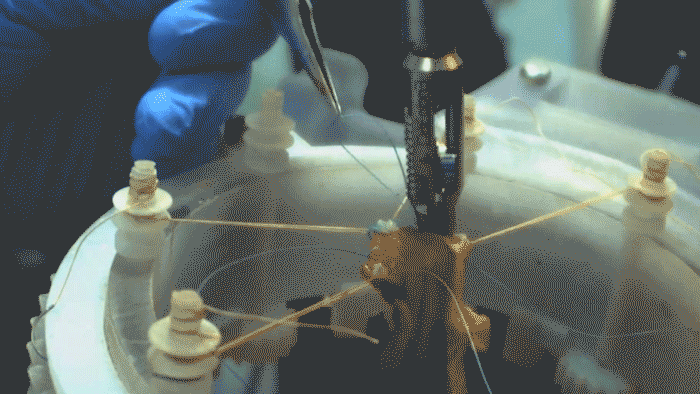Of the many advancements made in science, few may be as promising as those used to save lives. Over several decades, the field of robotics has given rise to assistive surgical technologies that have revolutionized operating rooms.
As humans we are limited to a certain range of dexterity and focus, often training for many hours just to hone the necessary skills. This is especially true of surgeons and other critically tasked medically personnel.
May 4, 2016 saw the publication of a new study featuring the “Smart Tissue Autonomous Robot,” or STAR, and what its presence may mean for the world of surgery.
STAR is heralded as a pioneer in autonomously robotic surgery, performing 60 percent of it’s trial operations without any human assistance. These trial surgeries were performed on tissue samples as well as a live, anesthetized pig to sew a lengthwise cut in the first experiment, and perform an anastomosis in the second.
Videos have emerged of STAR’s incredible precision, providing an idea of what surgery may come to look like in the very near future.
Compared to actual surgeons performing the same tasks, STAR achieved a higher degree of accuracy and fewer complications. Much of its success is due to the robot’s unique visual system. Placing near-infrared fluorescent injections in site of the operation, STAR can view its target as tissues bend and flex. This system also allows a 3D model to be monitored by doctors nearby.
Although the robot is mechanically functioning on its own, human oversight is still a very important part to this equation. Every stitch and step of the procedure is cleared by a human operator who has the ability to pause or disengage STAR at any moment.
Even if this robot outperformed human surgeons in nearly every metric of the experiments, does that really mean we’re ready for a completely automated operating room?
At most, STAR is considered to be an addition to the world of assisted surgery than a replacement for human doctors and surgeons. A similar device known as the da Vinci system has already been in use since 2000, designed to provide a minimally invasive solution to complex surgeries. This system is also controlled by a human seated at a console, however it lacks the ability to proceed completely by automation.
Despite the obvious advantages of automated technologies in the field of surgery, these machines do come with a significant price tag at around $2 million each. Along with financing these robotic-surgeons comes the need to train staff in how to operate them. However, it is really about patient safety, better procedures, and a faster rate of recovery — all promising results of STAR and machines like it.
We may not see a completely robotic operating room anytime soon, but it’s no doubt that these technologies will become increasingly prevalent in years to come. Just as phones have become smarter and our cars could soon be self-driving, physicians and surgeons of the future may be self-practicing.

